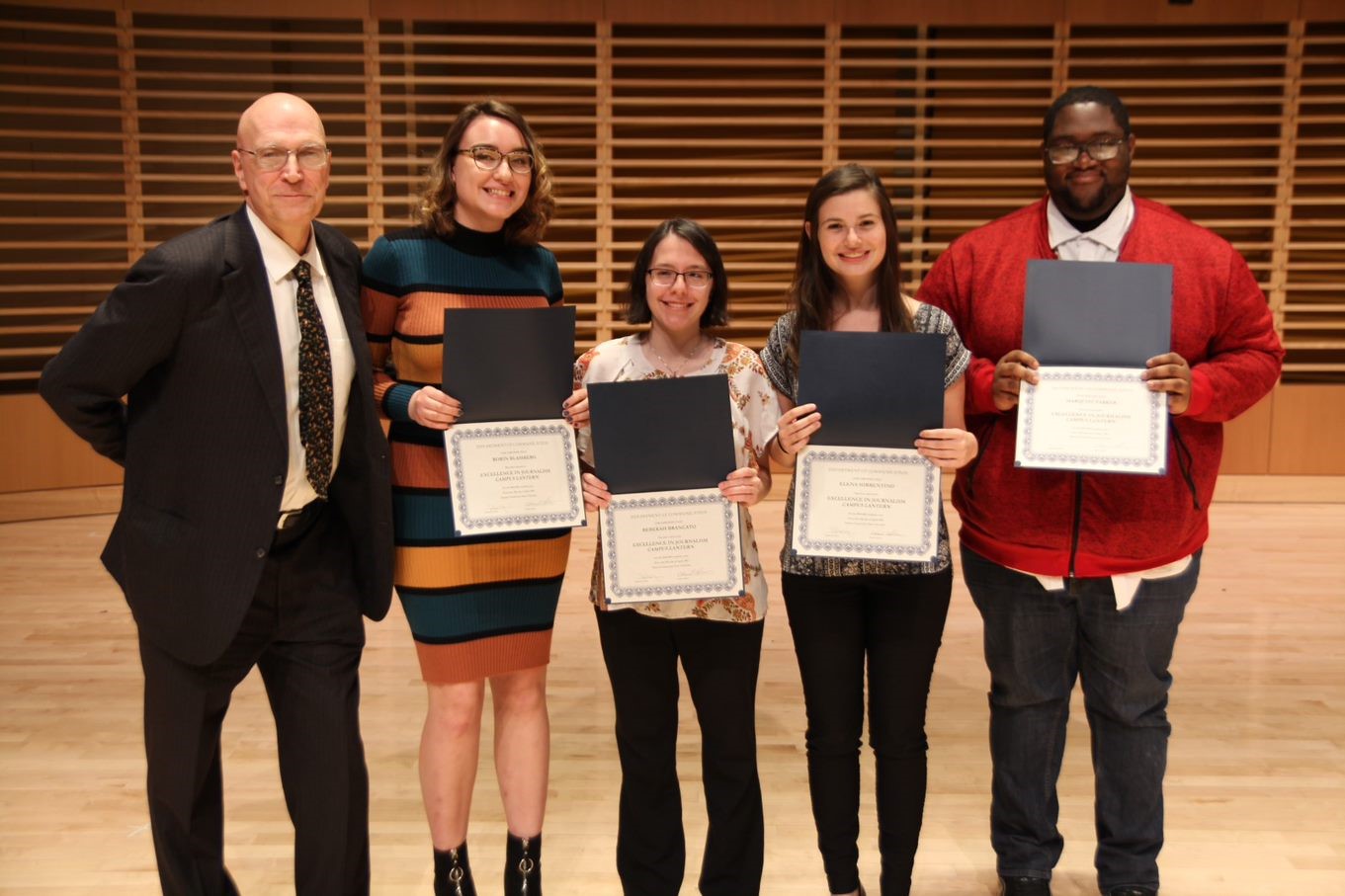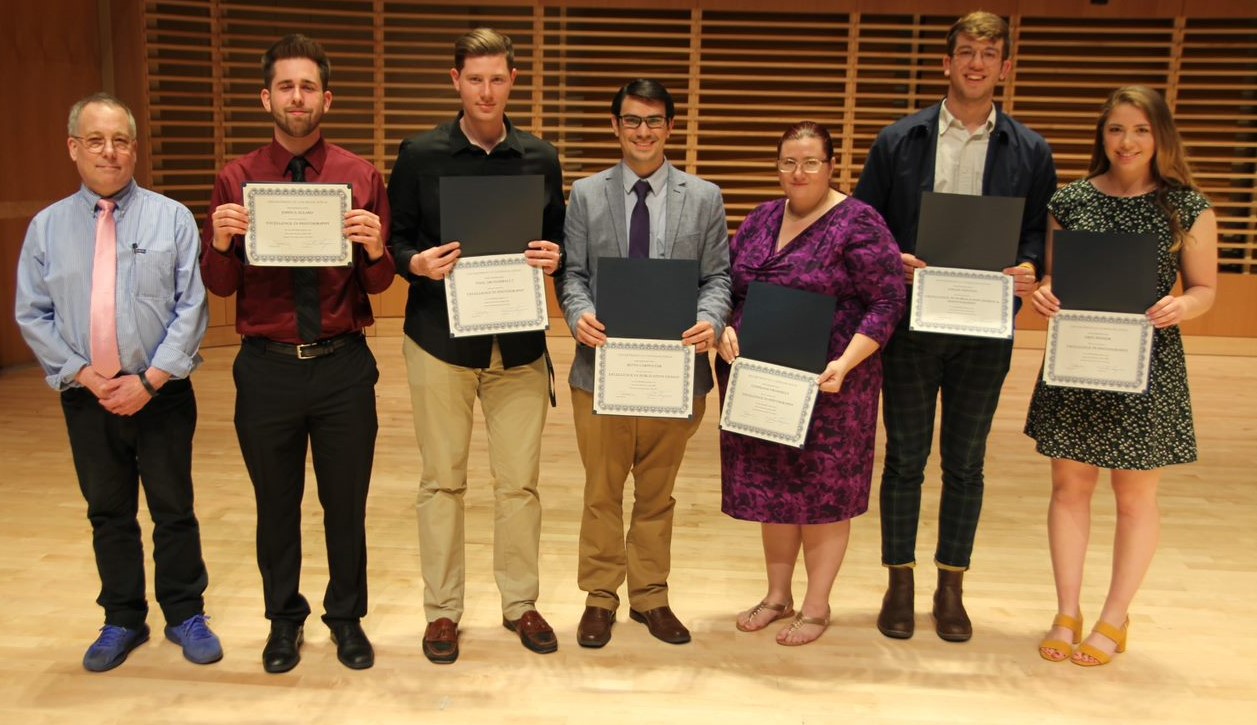- Apply
- Visit
- Request Info
- Give




The Media Writing and Journalism concentration in the Communication major prepares students for a variety of writing careers within the broad media spectrum. Students will demonstrate a professional level competency in an understanding of story structure and the real-world requirements of publishing their work in print, film, radio or the electronic media. Students will also understand the techniques and methods used to repurpose their writing across multiple media platforms.
Students must take the following: 9 credits
Students must select two additional courses from the following: 6~7* credits

COM 351 Contemporary Print Journalism
Current practices in newspaper and news magazine publishing including reporting, editing, style sheets and legal considerations. Economic aspects of publishing such as advertising, circulation and the impact of telecommunication.
COM 352 Emergent Media Reporting
The class focuses on reporting, writing across platforms, audience understanding and news storytelling in a variety of formats. The course also looks at innovative content delivery and investigative reporting through the use of data bases and statistical instruments to search large bodies of public data and find information on a particular subject. Government data bases, corporate filings, trends, and FOIA requests are all part of computer assisted reporting. (FOIA - Freedom of Information Act). Non-profit new associations such as ProPublica will be considered in their relationship to new emergent technologies.
COM 357 Scriptwriting
This course uses a multidisciplinary approach to writing. It examines the essential elements of scriptwriting for radio, television, film, Internet, stage, performance art, and other venues.
COM 210 Photography I
An introduction to the topic with a historical overview of discoveries leading to photographic technology; from the earliest to current digital imaging. This course is for an absolute beginner but is also information rich for students with experience. Lab demonstrations focus on learning the properties of light and exposure, comprehension of technical skills and visual perception Digital photography and camera function is covered in lecture analogous to film camera/darkroom concepts. Composition theory and visual communication are emphasized.
COM 252 Social Media Strategies
Looks at management and marketing of social media. How to: Drive traffic to a site, cross list and cross promote sites, understand what increases precedence of listing in search engines. The value of metatags, frequency of posting and the difference between narrow and broad focus of site content.
COM 310 Digital Photography
Focus is on venues for publication in mass media communication including photojournalism and marketing. Camera fundamentals, concepts of exposure and camera operation are reviewed. Lecture/lab topics include image protocols and techniques for photo display and editing with Adobe Photoshop. Retouching techniques and photomontage are introduced along with ethical issues regarding image manipulation and the ownership protections of copyright laws. Students compile digital portfolios of their lab work for display in a web portfolio using Adobe Dreamweaver.
COM 321 History of Communication
This course looks at the development of American newspapers, magazines, radio, television, and Internet with an emphasis on cultural, technological, and economic considerations.
COM 358 Scriptwriting & Presentation
This course focuses on the practical aspects of writing and presenting media scripts and on techniques, structures, and disciplines required to complete performance scripts.
COM 361 Publication Design
This course is designed to provide basic training instruction and practice in the fundamentals of graphics in mass communication. Students will be introduced to the processes of preparing and printing verbal and visual materials.
COM 450 Advanced Journalism
An advanced course applying principles and practices learned in earlier courses. Students assume various roles found on newspapers to gain an understanding of how the editorial side of the contemporary newspaper functions.
** Eastern students practicing media and journalism often try their hand at newswriting at Eastern's campus newspaper, The Campus Lantern. **